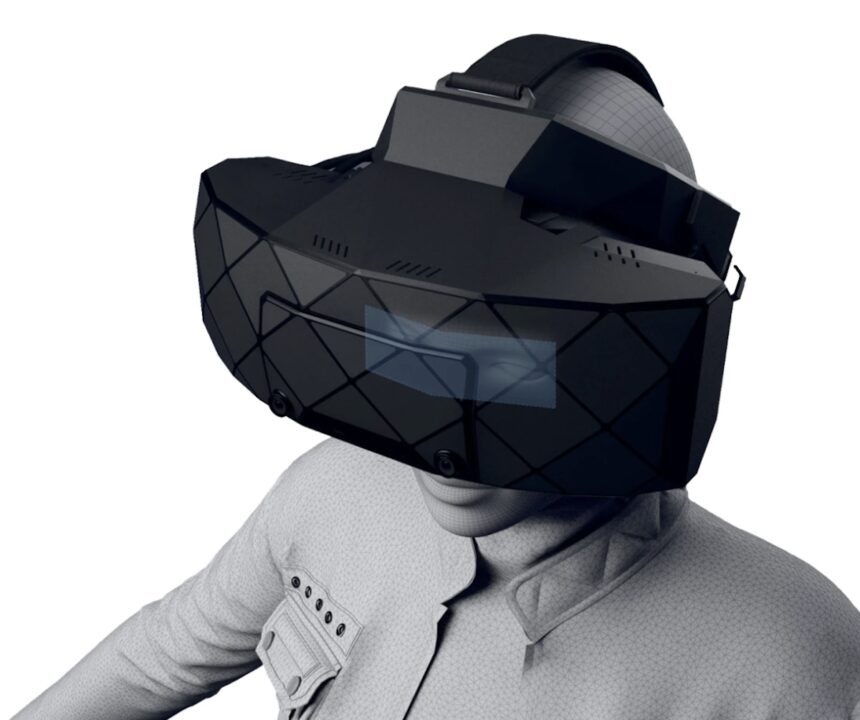
This article can be displayed with JavaScript enabled. Please enable JavaScript in your browser and reload the page.
VR headsets have come a long way in the last decade, but the visuals haven’t been the same. Why is that?
Every Monday, we answer a question from our readers. Send your question to tomislav@mixed.de with “Question” in the subject line, and with luck, we’ll get back to you next Monday.
This week’s question comes from Alexander Veit:
Why doesn’t Meta expand the viewing area of its VR headset?
Dear Alexander,
The question is fair. If you look at the technological development of VR headsets since Oculus Rift DK 1 (2013), these devices are much better in many ways than they were ten years ago.
In particular, the resolution is now very high and the introduction of pancake lenses means that these devices provide a sharper image and a narrower view. Headphones like the Meta Quest and Pico also eliminate the need for external devices and cables, which is a huge step forward.
On the other hand, the width of the field of view is limited, especially in the case of the famous Quest headphones. Quest 3 has the largest field of view of any Meta model to date at nearly 110 degrees, but the others aren’t far behind. By comparison, the human eye has a field of view of about 210 degrees horizontally and 150 degrees vertically.
Unlike Meta, other manufacturers such as Pimax and Vrginers have expanded the field of view significantly. For example, Pimax 8KX and XTAL 3 have a horizontal field of 170 and 180 degrees, respectively. This is very close to nature.


The XTAL 3 offers a consistent horizontal view of about 180 degrees, but it’s more and less expensive for the average consumer. | | Photo: Vrginers
The field of view is important for immersion and there is potential to go beyond that, so why isn’t Meta expanding the field of view on their headphones?
Meta’s CTO Andrew Bosworth responded in 2022 himself, when he said that expanding the viewing area comes at a high cost and doesn’t feel like a fair trade-off. “FOV is a very expensive thing to increase because you are adding more pixels in the definition that will not be useful. They will be at the edge, and they are as expensive as the power,” Bosworth. he said at the time.
The Pimax 8KX and XTAL 3 are both wired and get power from a PC and wall outlet, not from an integrated chip and battery like the Quest. They are also more expensive, which is probably due to their optical design. The form is also affected: Pimax 8KX and XTAL 3 are very large devices due to their many features and are not suitable for many.
However, Meta seems to be still researching headphones with more features: Bosworth posted photos from Meta’s research center over the weekend showing him testing prototypes. One of the images shows a device that appears to have a very large field of view. Don’t expect the prototype to become a product anytime soon, however, as Meta does a lot and doesn’t turn prototypes into products.


Bosworth with a large FOV head-mounted display. | | Photo: Andrew Bosworth
A few months ago, Bosworth outlined what Meta Quest would look like in seven years. His statement about the field of thought shows that we should not expect a very large field, but that it can grow vertically rather than horizontally.
I will conclude my question with Bosworth’s words:
“So you want to be on a certain point of view, that you don’t just look at the edge. And I think that the long view is more important than the immersion view. It’s more important for us as a species in terms of the density of information because our eyes see very horizontally.
Kind regards,
Tomislav
Do you like VR and AR? Then follow us Facebook or X or share your experience in the comments. For answers, topic ideasor other ideas, please email us at hello@mixed-news.com.
Buy Quest 3S & Accessories
Note: Links to online stores in the text may be so-called affiliate links. When you make a purchase through this link, MIXED will receive a commission from the supplier. For you the price does not change.
#headsets #suck #terms #visuals